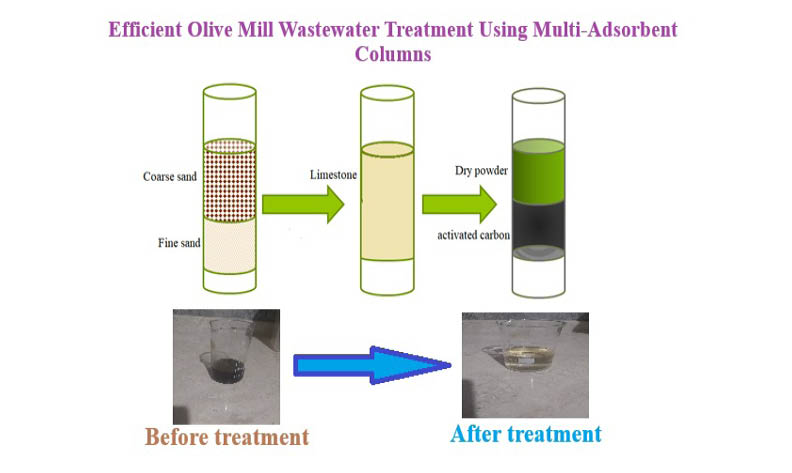Efficient Treatment of Olive Mill Wastewater using a Three-Column Continuous System Packed with Different Adsorbents
DOI:
https://doi.org/10.17344/acsi.2024.9047Abstract
This study aimed to investigate the feasibility and effectiveness of using a three-column continuous system for treating olive mill wastewater (OMW). The methodology involved passing the wastewater through three successive columns packed with various adsorbent materials. The efficiency was evaluated by measuring several chemical and physical properties before and after treatment, including pH, EC, TDS, acidity, turbidity, chloride, nitrate, nitrite, sulphate, phosphate, Na, K, Ca, Fe, Cu, total phenols, and total flavonoids. The initial values of these properties varied among the samples. After treatment, the measured properties were significantly changed, including an increase in pH from 4.8 to 6.9, EC from 12990 to 1407 µS/cm, turbidity from 7328 to 2791 NTU, chloride from 3400 to 422 ppm, nitrate from 307 to 4.34 ppm, Na from 293 to 178 ppm, K from 2243 to 86 ppm, Ca from 91 to 60 ppm, and a significant reduction in total phenols from 9821 to 35 mg/g. The results suggest that the proposed treatment is effective for purifying OMW and offers insights for developing sustainable and eco-friendly wastewater treatment methods.

Downloads
Published
Issue
Section
License
Copyright (c) 2025 Khaled Muftah Elsherif, Mohamed Elbagermi, Aisha Shemila

This work is licensed under a Creative Commons Attribution 4.0 International License.
Except where otherwise noted, articles in this journal are published under the Creative Commons Attribution 4.0 International License
